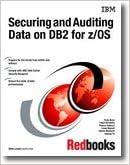



Allowance method entries The following transactions were completed by Wild Trout Gallery during the current fiscal year ended December 31: Reinstated the account of Arlene Gurley, which had been written off in the preceding year as uncollectible. Journalize the receipt of $1,875 cash in full payment of Arlene's Jan. 19. account. . Apr. 3. Wrote off the $10,740 balance owed by Premier GS Co., which is bankrupt. July 16. Received 25% of the $19,300 balance owed by Hayden Co., a bankrupt business, and wrote off the remainder as uncollectible. Nov. 23. Reinstated the account of Harry Carr, which had been written off two years earlier as uncollectible. Recorded the receipt of $3,055 cash in full payment. Dec. 31. Wrote off the following accounts as uncollectible (compound entry): Cavey Co., $8,080 ; Fogle Co., $2,400 ; Lake Furniture, $ 5,170 ; Melinda Shryer, $1,745. Dec. 31. Based on an analysis of the $952,200 of accounts receivable, it was estimated that $41,400 will be uncollectible. Journalize the adjusting entry. Required: 1. Record the January 1 credit balance of $39,400 in a T account presented below in requirement 2b for Allowance for Doubtful Accounts. 2. a. Journalize the transactions. If an amount box does not require an entry, leave it blank. Note: For the December 31 adjusting entry, assume the $952,200 balance in accounts receivable reflects the adjustments made during the year. Jan. 19-reinstate Accounts Receivable-Arlene Gurley v 1,875 Allowance for Doubtful Accounts 1,875 1,875 Jan. 19-collection Cash Accounts Receivable-Arlene Gurley 1,875 Apr. 3 Allowance for Doubtful Accounts 10,740 Accounts Receivable-Premier GS Co. 10,740 July 16 Cash 4,825 Allowance for Doubtful Accounts 14,475 Accounts Receivable-Hayden Co. 19,300 Accounts Receivable-Premier GS Co. 10,740 July 16 4,825 Cash Allowance for Doubtful Accounts Accounts Receivable-Hayden Co. 14,475 19,300 3,055 Nov. 23-reinstate Accounts Receivable-Harry Carry Allowance for Doubtful Accounts 3,055 3,055 Nov. 23-collection Cash Accounts Receivable-Harry Carr 3,055 18,395 8,080 Dec. 31-write-off Allowance for Doubtful Accounts Accounts Receivable-Cavey Co. Accounts Receivable-Fogle Co. Accounts Receivable-Lake Furniture Accounts Receivable-Melinda Shryer 2,400 6,170 1,745 Dec. 31-adjusting Bad Debt Expense Allowance for Doubtful Accounts 2. b. Post each entry that affects the following T accounts and determine the new balances: Allowance for Doubtful Accounts Apr. 3 10,740 Jan. 1 Balance 39,400 July 16 14,475 Jan. 19 1,875 Dec. 31 18,395 Nov. 23 3,055 Dec. 31 Unadjusted Balance Dec. 31 Adjusting Entry Dec. 31 Adjusted Balance Bad Debt Expense Dec. 31 Adjusting Entry Feedback Check My Work Set up T accounts. Recall that under the allowance method, the entry to write off an account debits Allowance for Doubtful Accounts and credits Accounts Receivable. In such cases where an account receivable that has been written off is later collected, the account is reinstated by an entry that reverses the write-off entry. Then record the receipt of cash as payment for the account. The amount of bad debt expense is affected by the balance in the allowance account. Learning Objective 4. 3. Determine the expected net realizable value of the accounts receivable as of December 31 (after all of the adjustments and the adjusting entry) 4. Assuming that instead of basing the provision for uncollectible accounts on an analysis of receivables, the adjusting entry on December 31 had been based on an estimated expense of 12 of 1% of the sales of $5,880,000 for the year, determine the following: a. Bad debt expense for the year. b. Balance in the allowance account after the adjustment of December 31. 3. Determine the expected net realizable value of the accounts receivable as of December 31 (after all of the adjustments and the adjusting entry). 4. Assuming that instead of basing the provision for uncollectible accounts on an analysis of receivables, the adjusting entry on December 31 had been based on an estimated expense of V2 of 1% of the sales of $5,880,000 for the year, determine the following: a. Bad debt expense for the year. b. Balance in the allowance account after the adjustment of December 31. $ C. Expected net realizable value of the accounts receivable as of December 31 (after all of the adjustments and the adjusting entry)










